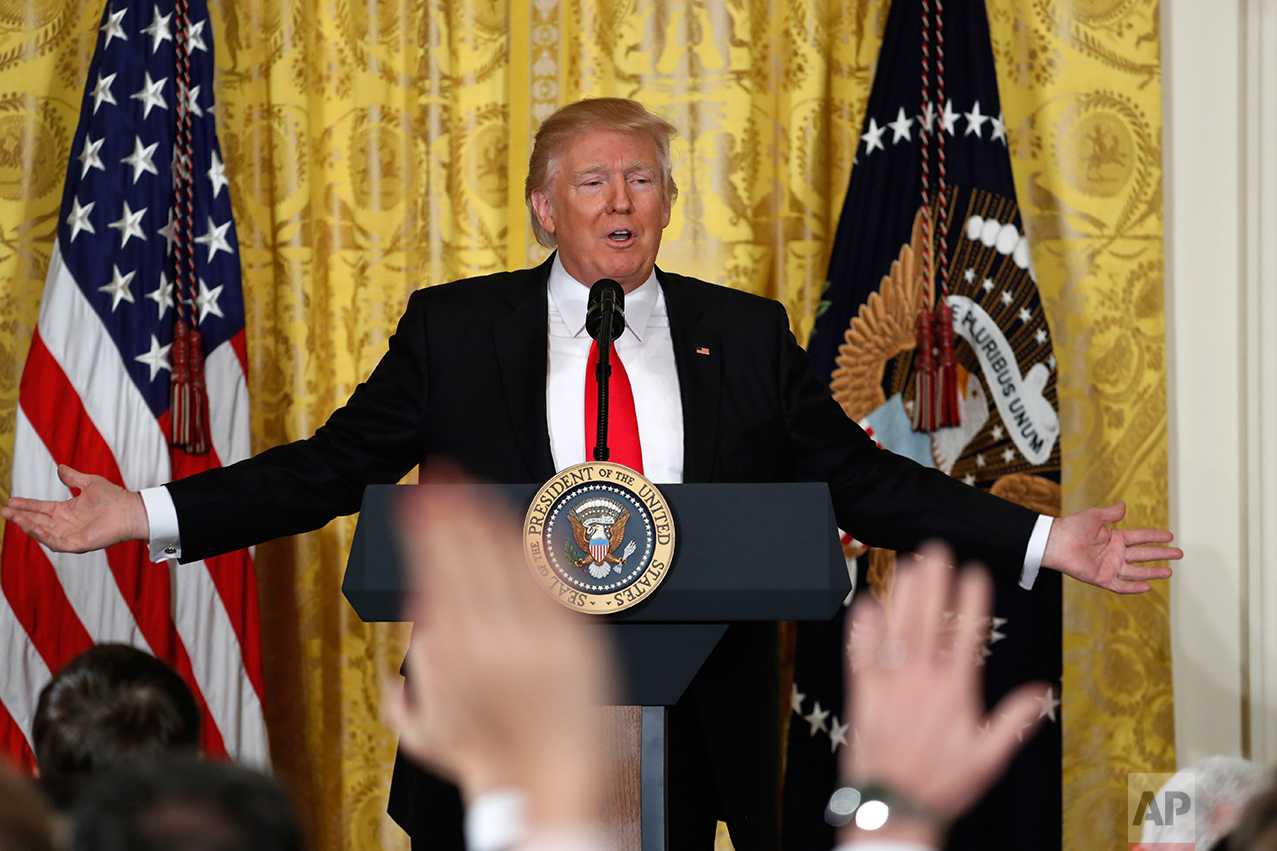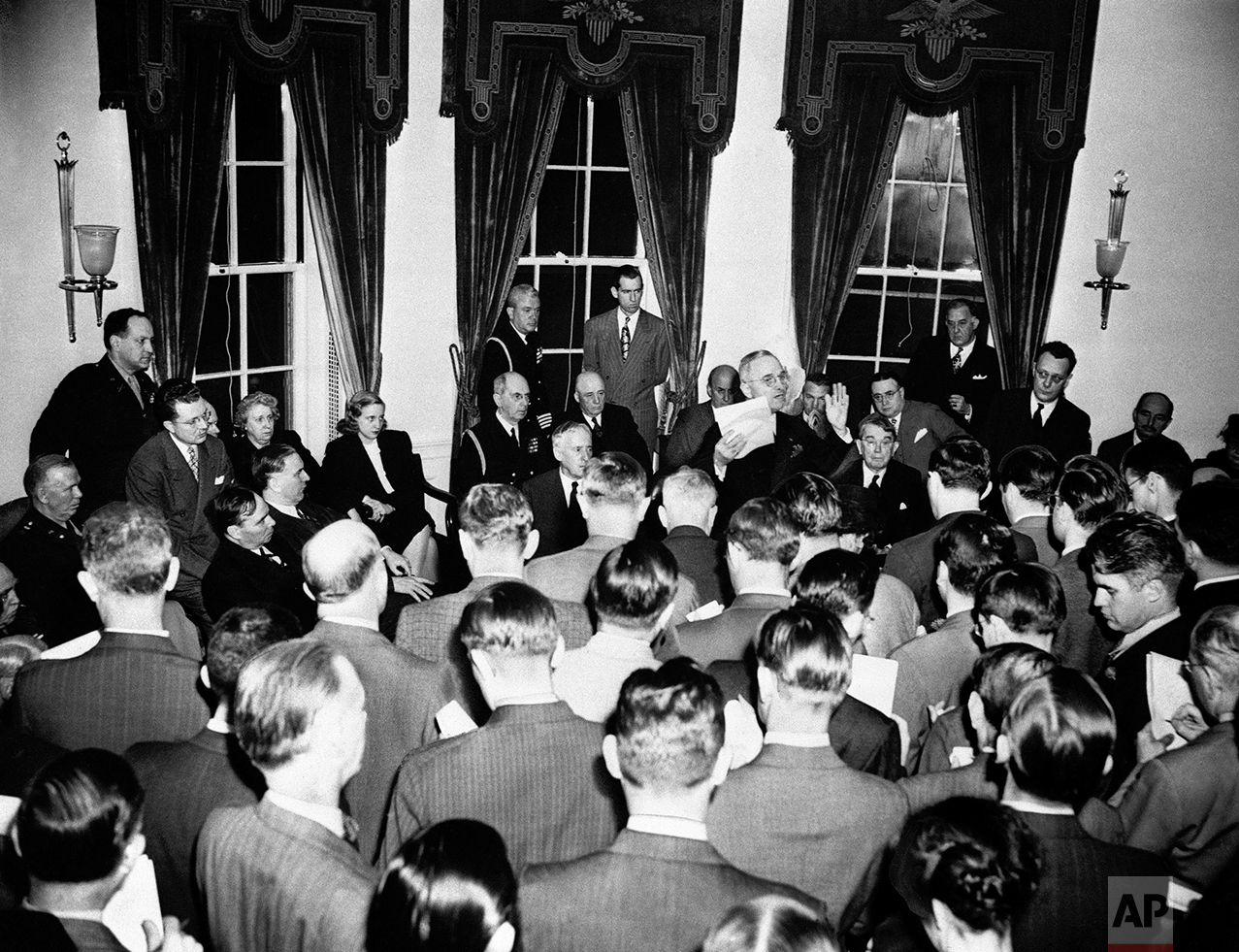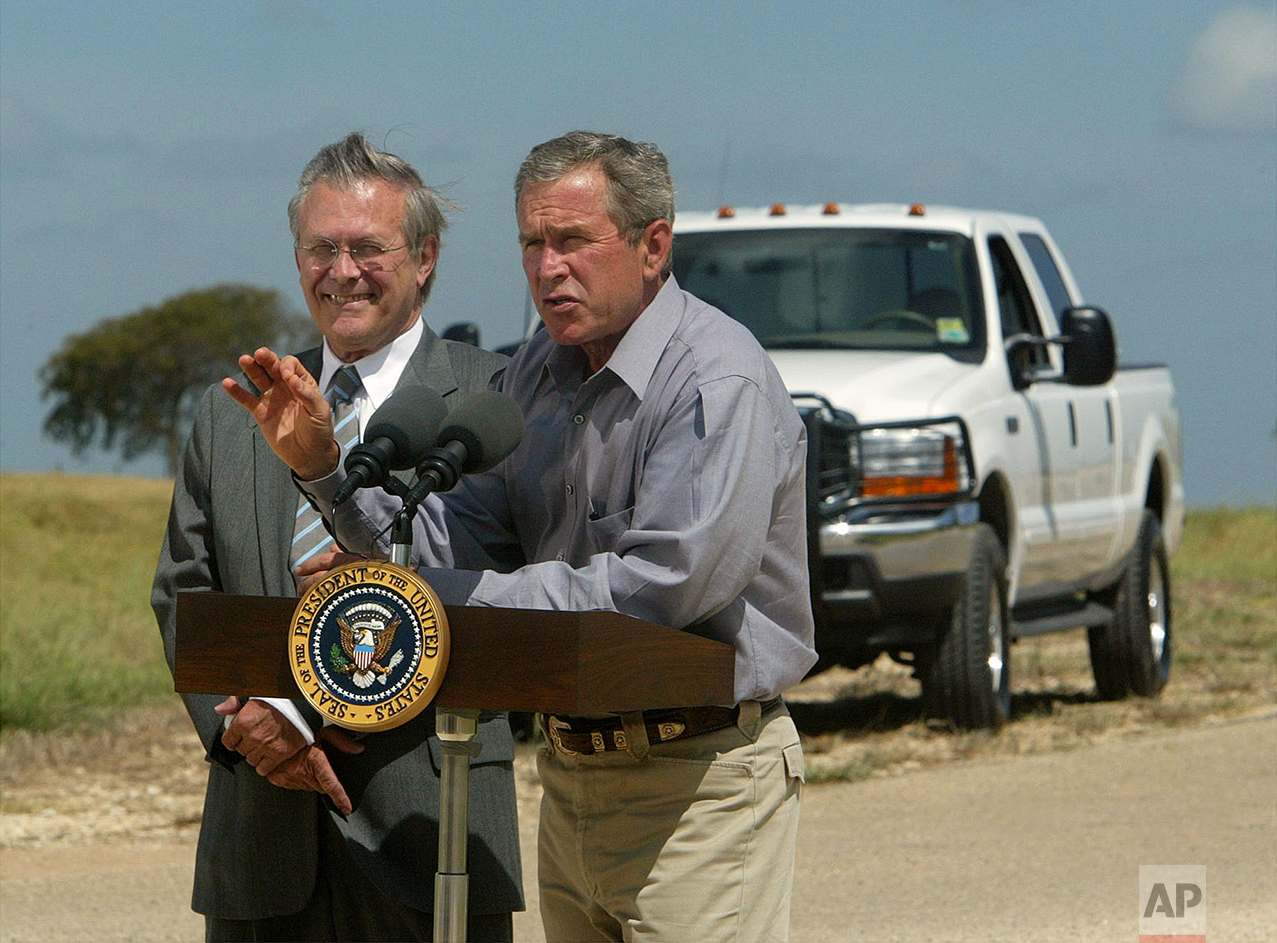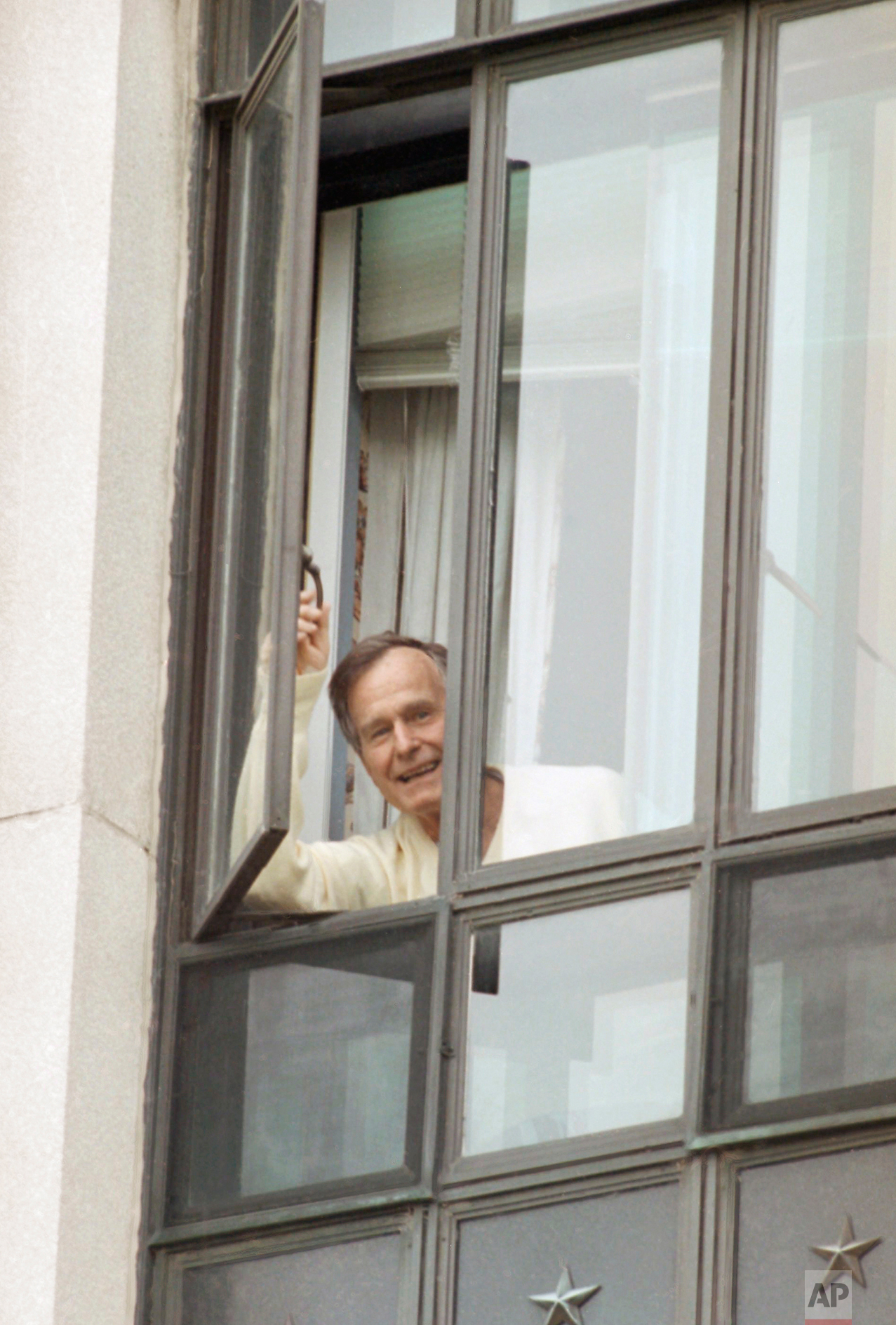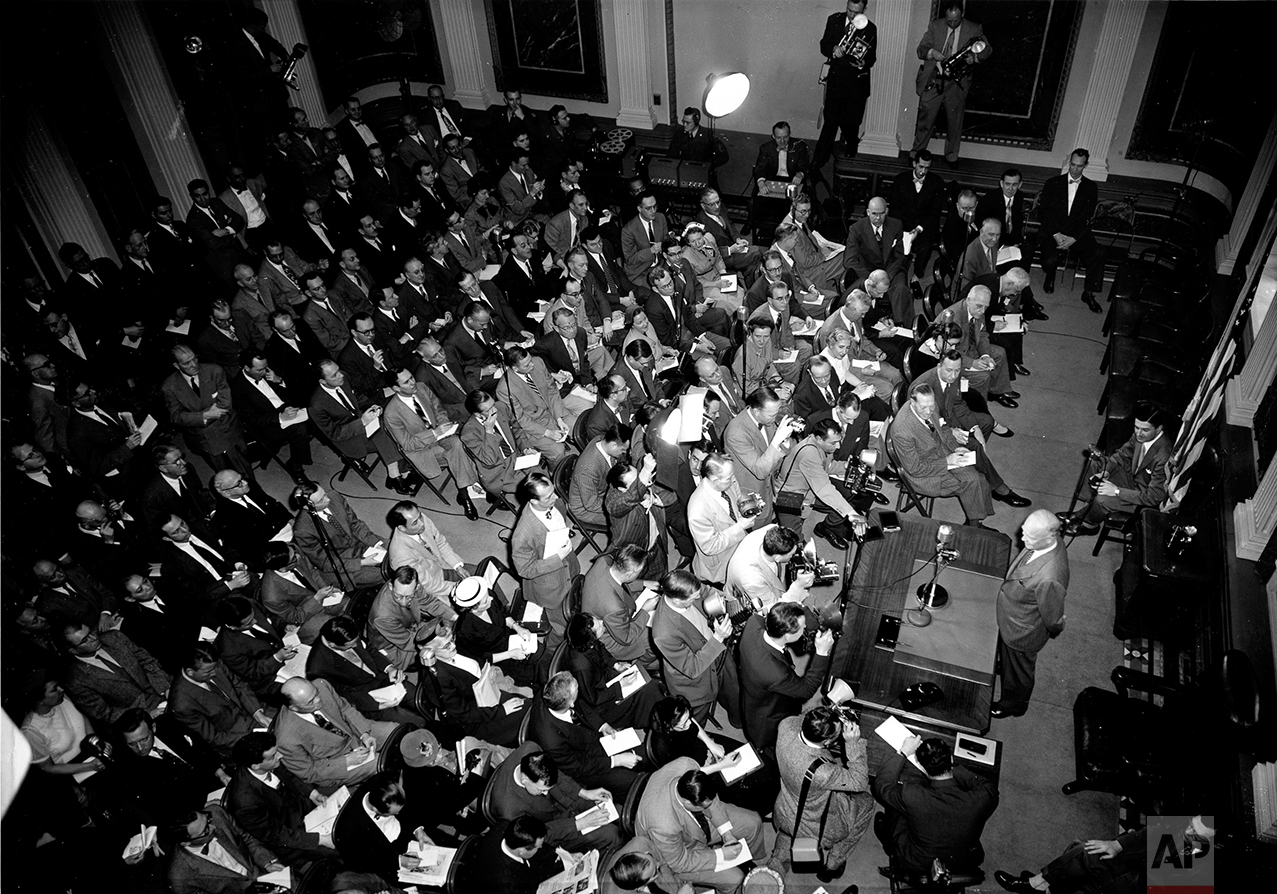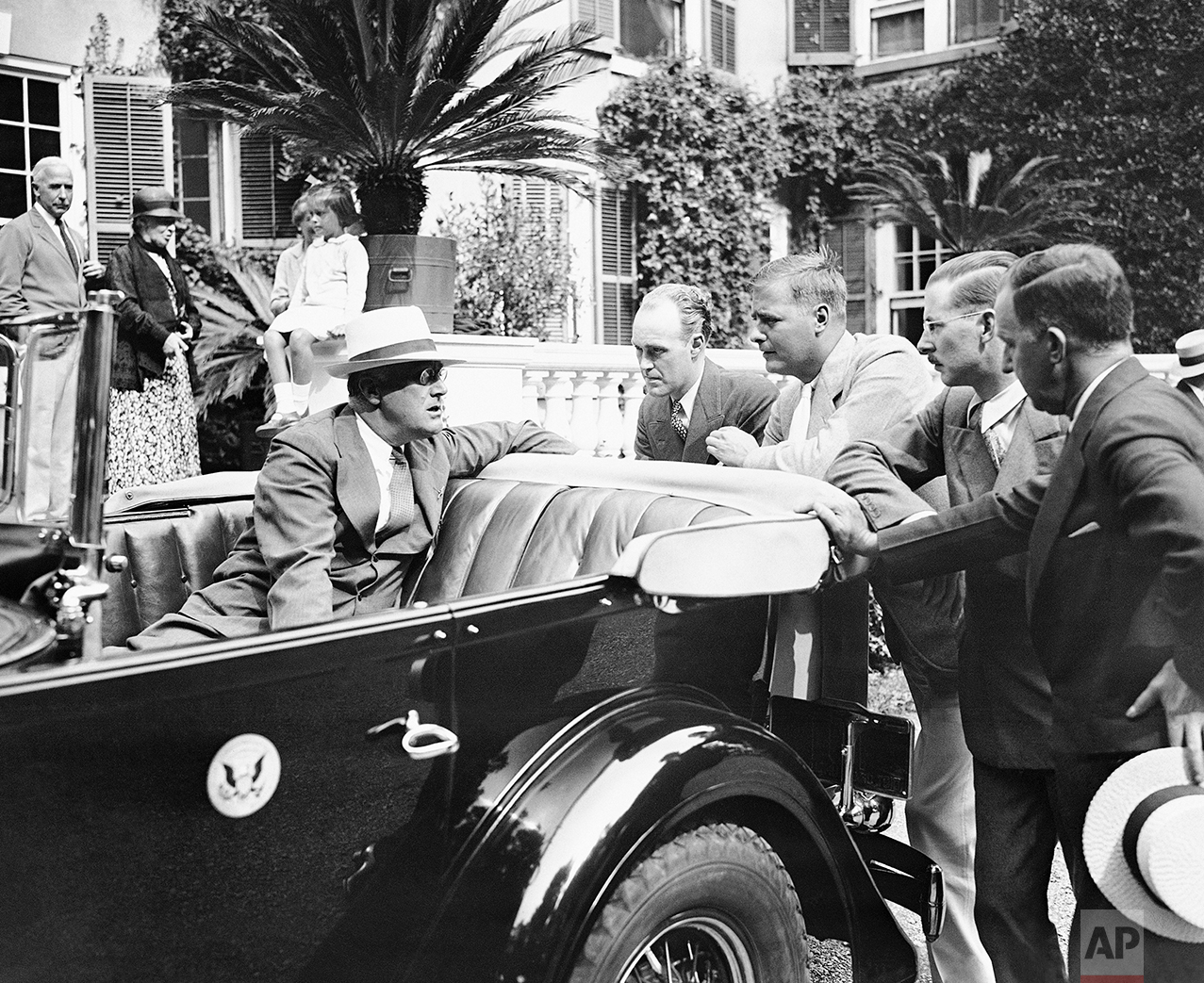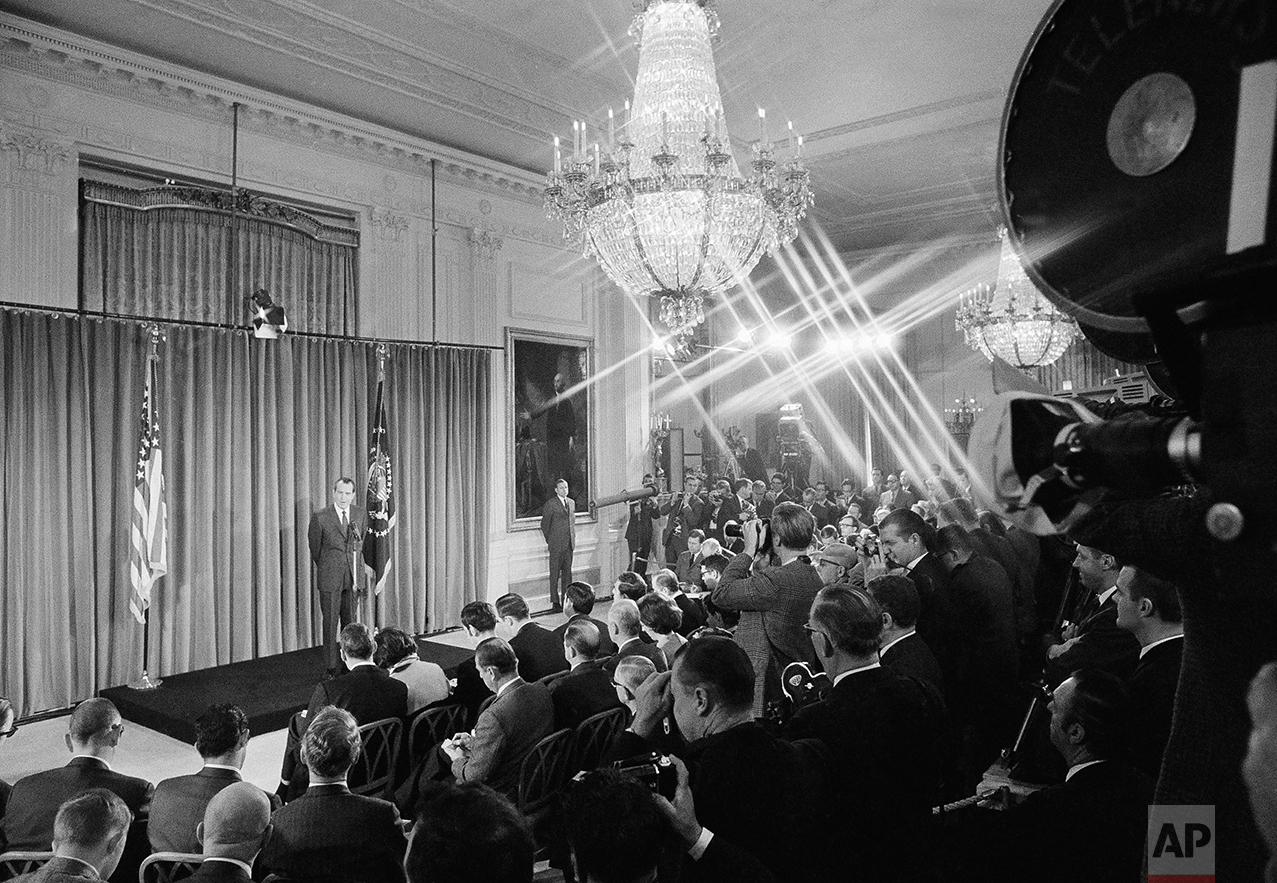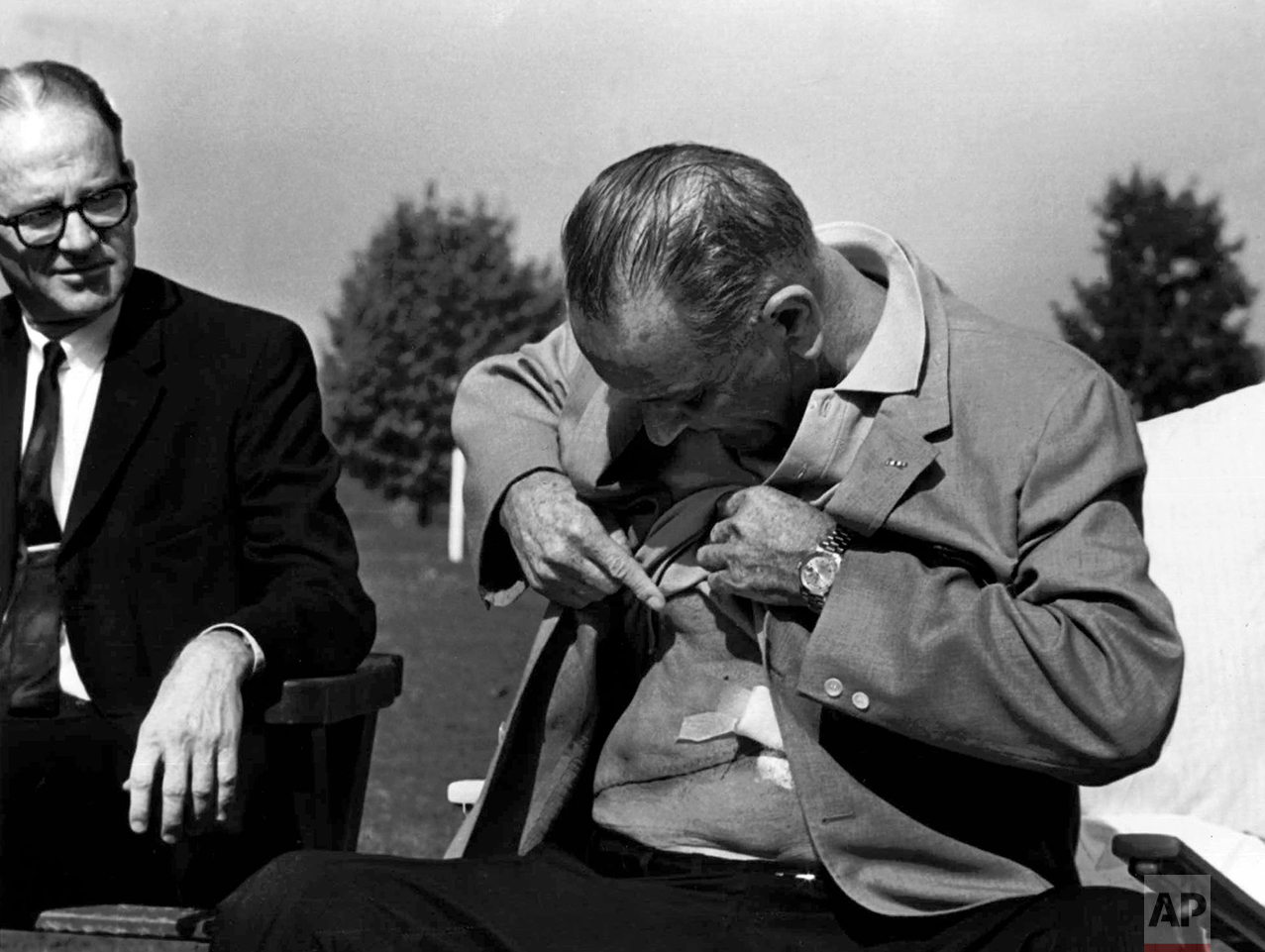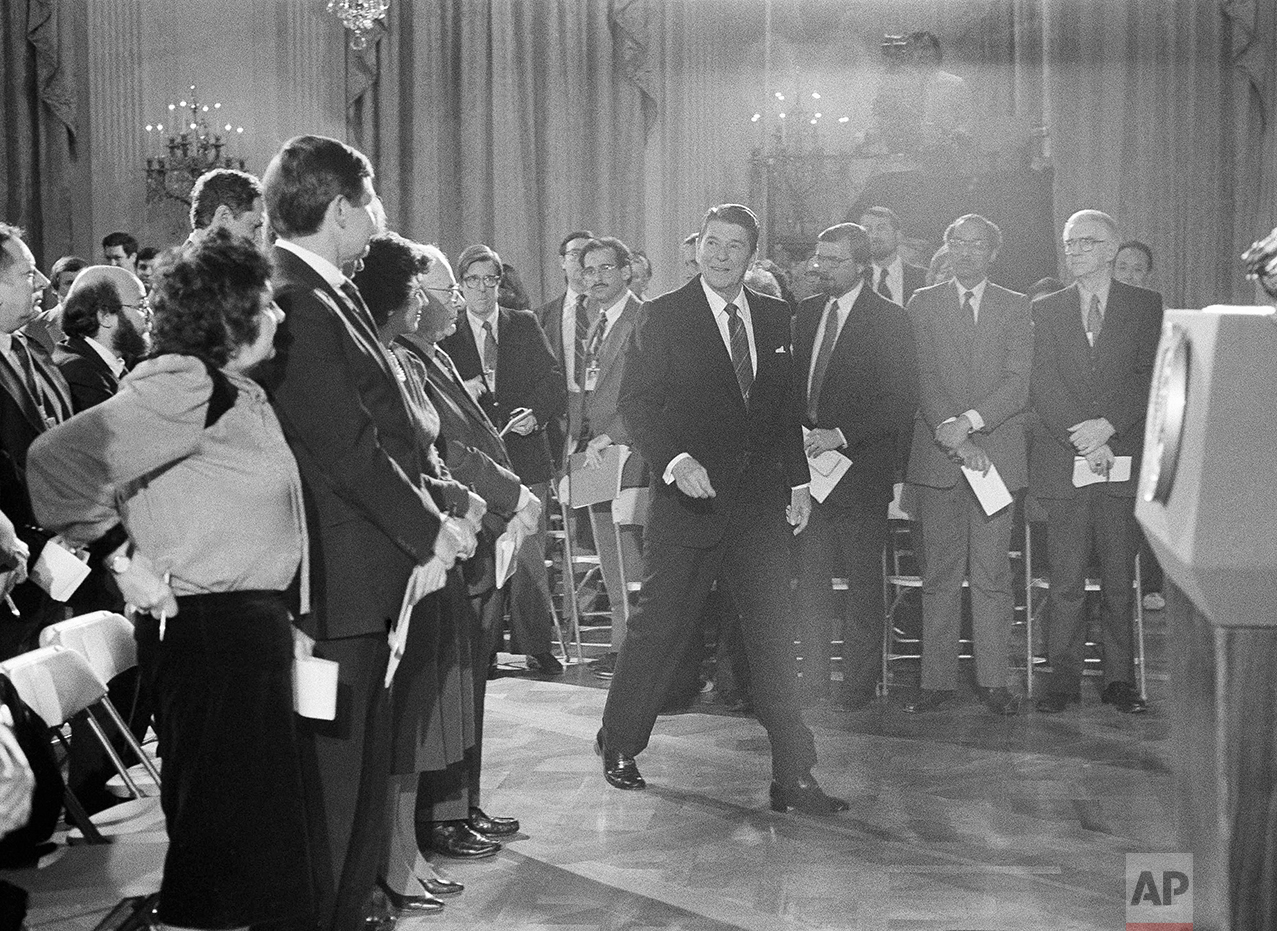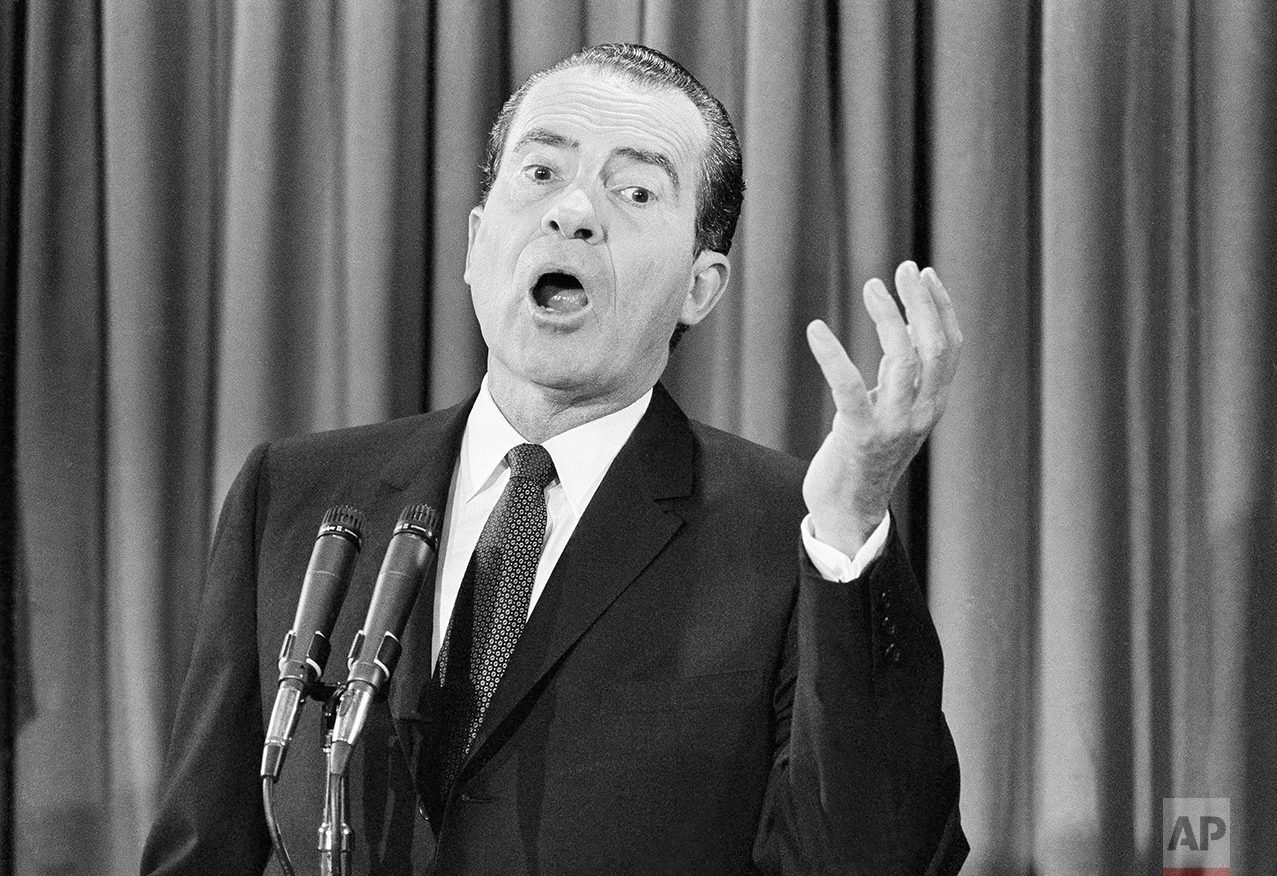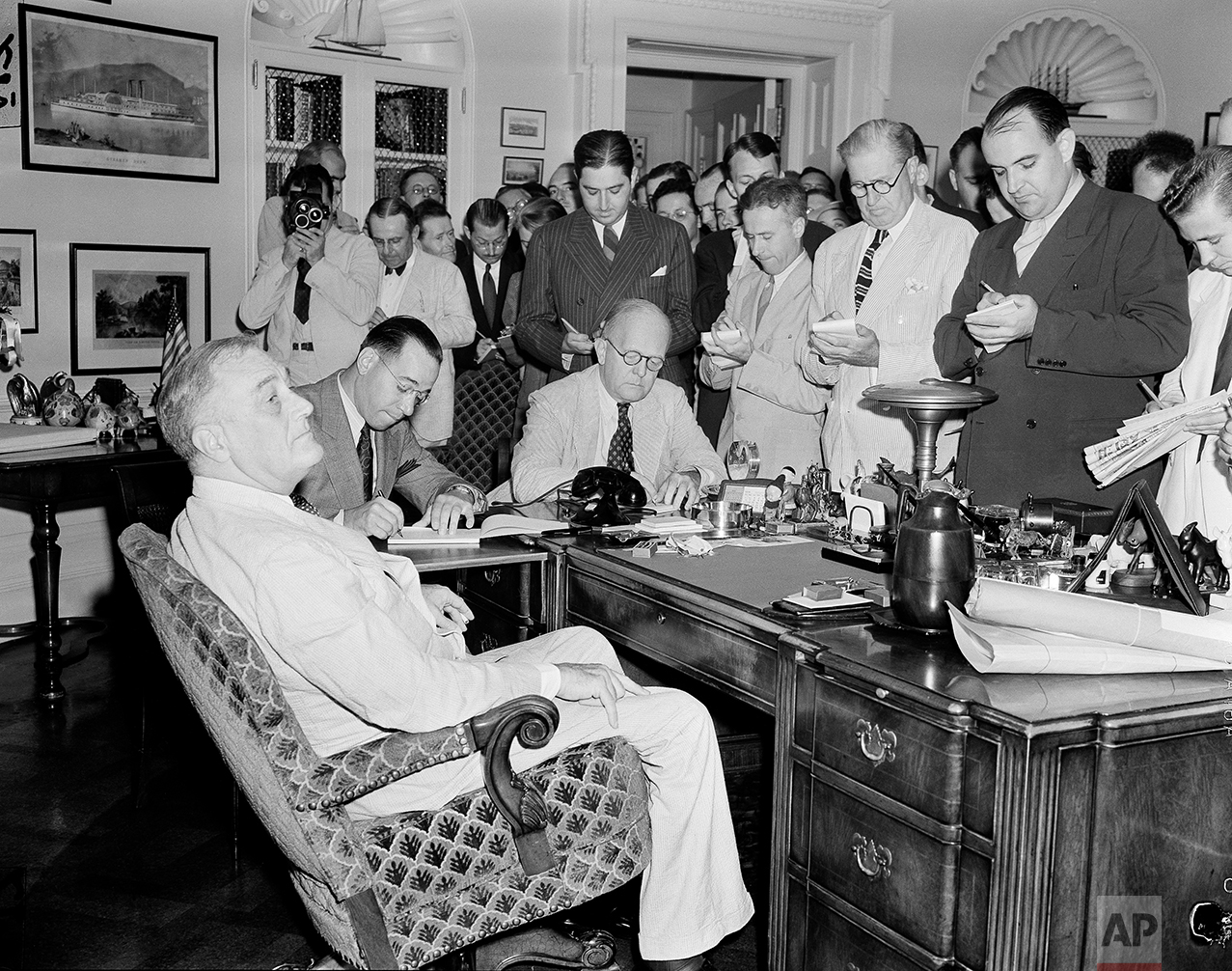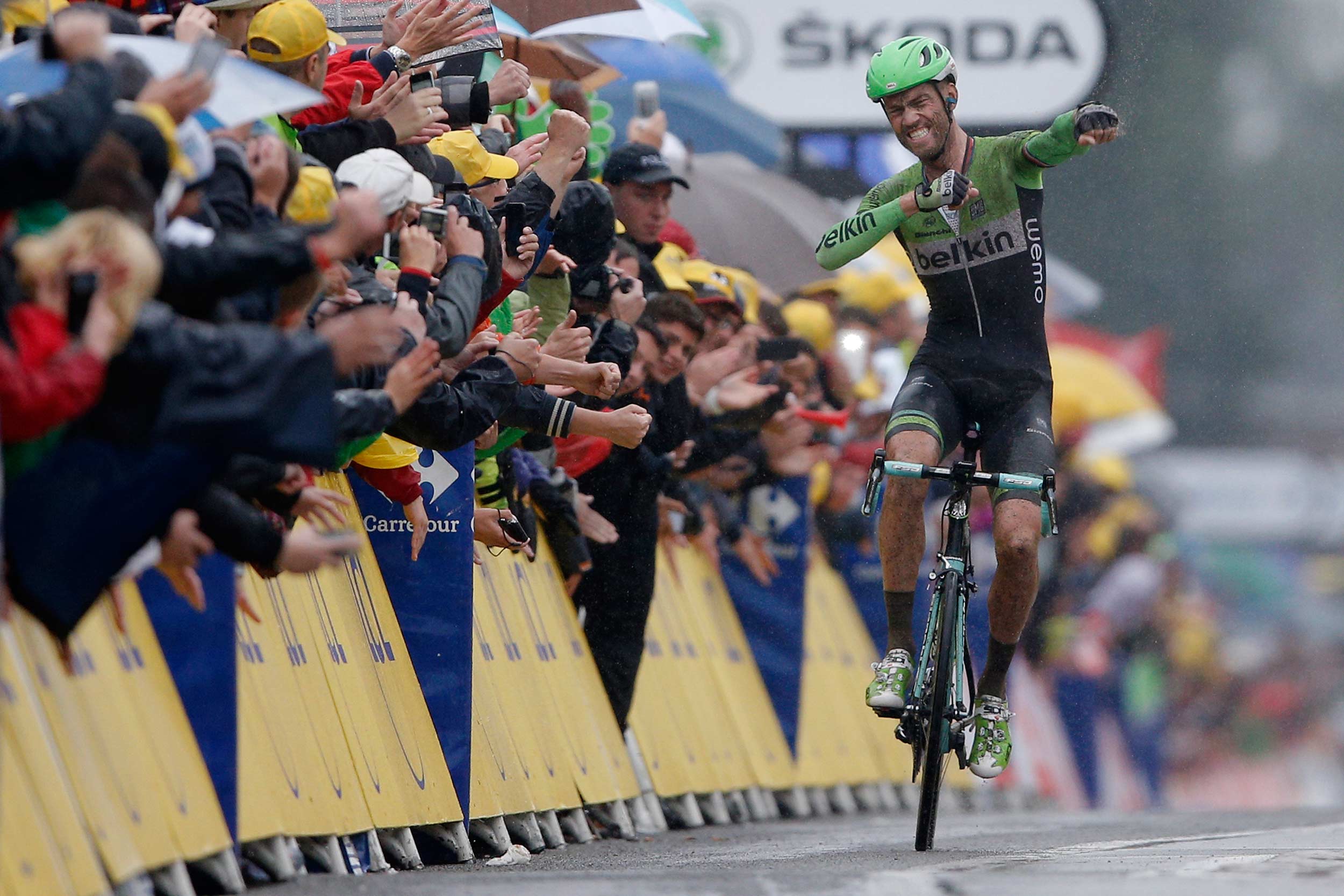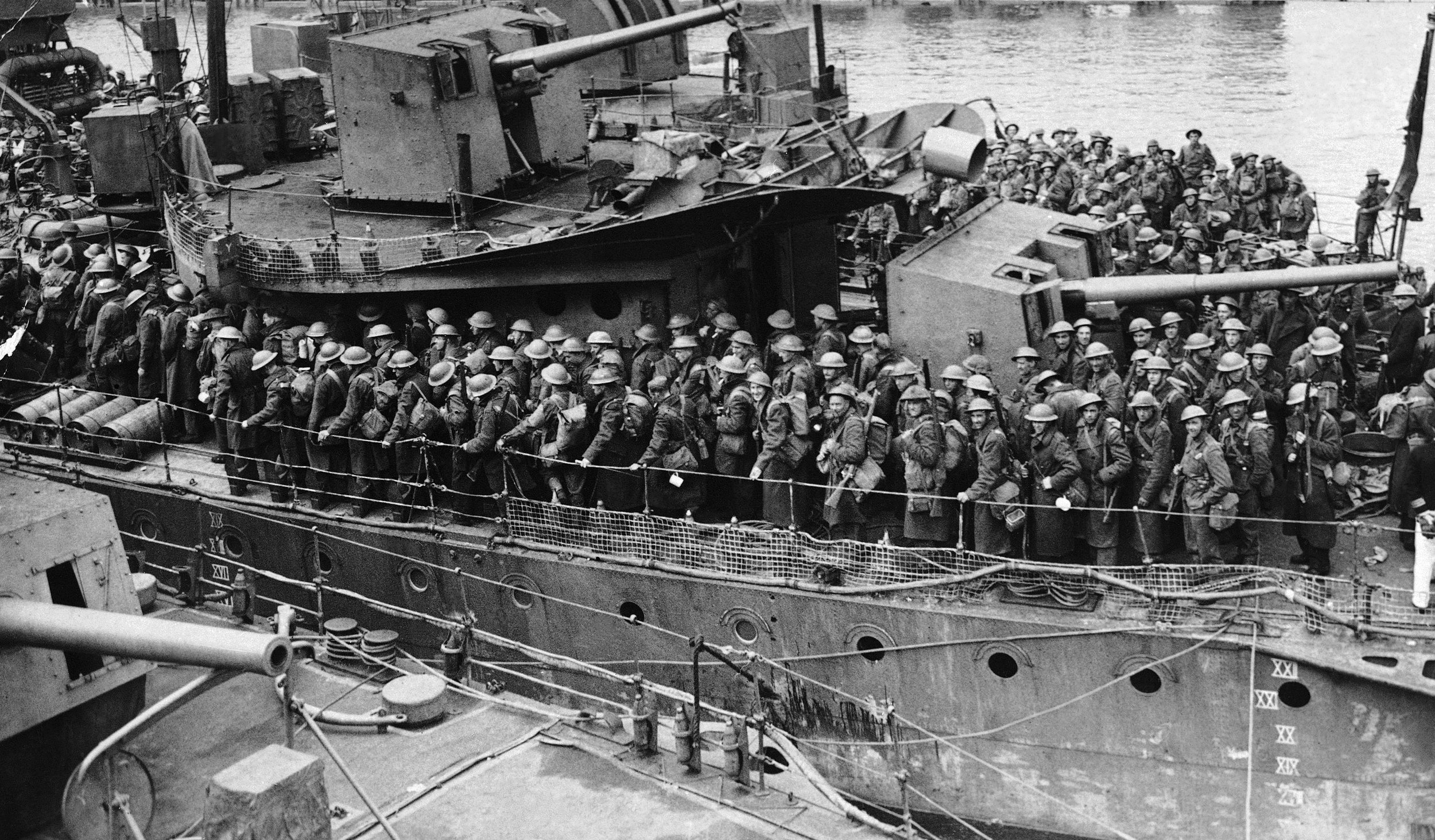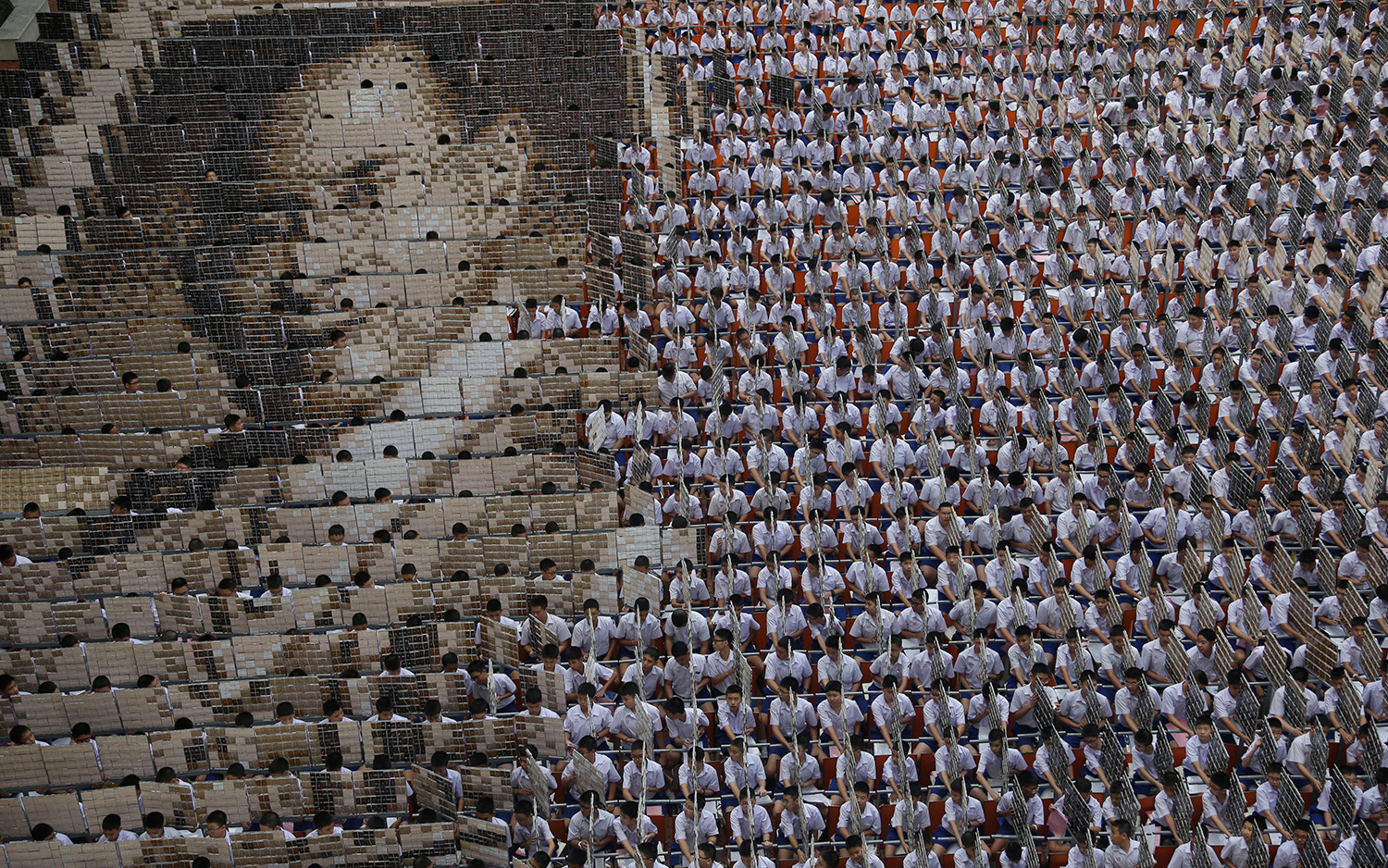The President and the Press

85 Years of Questions and Answers, Captured in Photographs by The Associated Press
The tradition of presidential press conferences is believed to have started with President Woodrow Wilson on March 15, 1913. “I have a very friendly feeling for the newspapers and gentlemen of the press, despite what you may have heard to the contrary. I realize the press is the best friend the country has,” Wilson was quoted as saying in the next day’s Arkansas Gazette.
There are no photographs of that meeting in AP’s archive but The New York Times reported that “when he took his place at his desk and saw 125 newspaper men stream in, or about half the newspaper correspondents of Washington, the President’s amazement was written on his face.”
Whatever his true feelings were, Wilson began a tradition that continues today, both with formal scripted press conferences as well as more relaxed, informal affairs. The Associated Press photo archive contains images of every president from Franklin D. Roosevelt in 1933 to Donald J. Trump in 2017 speaking to newsmen and women.
Spanning 85 years, the photos of presidents and the press illustrate their complicated relationship: sometimes strained, often warm and friendly, other times downright hostile as the chief executive tries to make a point or sell an idea, while reporters and editors demand answers and insist on follow-up questions.
The gallery of images spans 14 presidents. In between Roosevelt and Trump, there are pictures of Truman, Eisenhower, Kennedy, Johnson, Nixon, Ford, Carter, Reagan, George H.W. Bush, Clinton, George W. Bush and Obama.
The range of moments and situations is astounding: Truman announcing the surrenders of both Germany and Japan in WWII to reporters; George W. Bush in August 2002, on a dusty road in Crawford, Texas with Donald Rumsfeld at his side seven months before the start of the Iraq war; his father George H.W. Bush laughing from a hospital window at Bethesda Naval Medical Center in 1991 when he suffered from an irregular heartbeat; Roosevelt, wearing a fedora, chatting with reporters from the backseat of a car; and Barack Obama celebrating the birthday that he shared with reporter Helen Thomas in the White House press room.
An AP account of the sitting president’s first formal press conference ran with the headline, “Trump’s long-awaited news conference quickly turns combative.” The presser was described by AP reporter Jonathan Lemire in his Jan. 11, 2017 story this way: “Donald Trump's raucous first news conference as president-elect bore little resemblance to the usually staid and choreographed sessions with the occupant of the Oval Office. It was a 58-minute display of how some of the old rules of journalism will be tested in the Trump era.”
One expert on presidential press conferences is AP photographer Scott Applewhite, who has photographed six presidents from Reagan to Trump. “The press conferences and nearly all aspects of press/presidential relations are a reflection of the attitudes and personality of the president himself,” says Applewhite, adding: “George H. W. Bush was comfortable around us photographers and we all sure enjoyed his attitude toward us. Clinton, the most natural-born politician of all, had it all — his emotions, mood and expressions seemed constructed to reinforce the story of the day.”
One of the changes Applewhite says he’s seen in decades covering the White House “has been the evolution of politicians and president staging the news, staging the visuals and basically creating their view of perfection through props, environment, signage etc., and then by actually controlling total access of coverage.” The biggest struggle is to “photograph reality amid all of the Hollywood touches.”
One fascinating feature of these AP photos is the wide range of emotions on display. The pictures capture frustration and anger, joy and laughter, moments of stress and resolve. While each president has his own relationship with the media, one thing is obvious from these images: Each of these chief executives serving as the so-called leader of the free world is unique and all too human. Scott Applewhite sums it up well: “I'm not sure why, but in some of my best pictures, especially political pictures, there’s often an element of larceny -- stolen moments. A glimpse that they didn't want to reveal.”
Associated Press staff continually edit, scan, caption and upload historic images to the AP Images archive. On the left, the envelope for the 1939 photograph of President Roosevelt, below, describes how “this i(s) the first time a cameraman has been allowed (in a) presidential press conference since Roosevelt(’s) first conference in 1933.” The cameraman can be seen top left, above Roosevelt. In the image at right, the 4x5 black and white negative is seen on a lightbox at AP headquarters in New York. (AP Photo/Jonathan Elderfield)
For a look at other aspects of the presidency through words and pictures of AP reporters and photographers, see this special feature: The American President
Text by Jonathan Elderfield, edited by Beth Harpaz
Follow AP photographers on Twitter
Written content on this site is not created by the editorial department of AP, unless otherwise noted.
Visual artist and Digital Storyteller at The Associated Press

